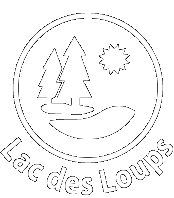Eurasian watermilfoil
For a number of years, Lac des Loups was affected by the presence of an exotic aquatic plant called Eurasian watermilfoil. Some riparians have noticed this plant many years ago.
Here is a picture of what eurasian watermilfoil looks like.
The presence of this plant has an adverse affect on, not only nautical and tourist activities, but also on the health of the lake. Swimming, fishing and boating as well as the lake environment may be affected, as the density of watermilfoil beds could destroy spawning areas and could influence the oxygen content in the water.
For this reason, the Association Lac-des-Loups (ALDL) requested further study of the milfoil situation by Québec’s « Ministère du Développement durable, de l’Environnement et de la Lutte contre les changements climatiques (MDDELCC) ». To this end, two (2) important studies have been undertaken, both of which are available in French.
- ABV7 Délimitation des herbiers de myriophylle en épi, lac des Loups, MRC des Collines de l’Outaouais (2016, documenting the presence of Eurasian milfoil in the lake.)
- Le Réseau de surveillance volontaire des lacs: suivi du lac des Loups (2013, documenting the chemical composition of the lake water and the general health of the lake.)
Milfoil Committee
In 2017, the Lake Association created a milfoil committee to monitor the evolution of the plant in the lake. Until the COVID crisis, the committee published annual reports and produced different educational materiel on the subject for Association members.
Protocole d’intervention (2018, en français seulement)
PowerPoint presentation at AGM 2019 – Evolution of milfoil in the lake between 2016 and 2018
Blue-green algae -What is it?
Cyanobacteria, more commonly known as blue-green algae, are an ancient group of algae. Although they are most closely related to bacteria, like plants, they are capable of photosynthesis. Their pigmentation gives them their characteristic color. They reproduce rapidly in lakes and ponds where there is shallow water, adequate amounts of sunlight, warm air/water temperatures, calm winds, and sufficient amounts of the nutrients such as phosphorus and nitrogen.
A bloom containing blue-green algae may look like thick pea soup, green paint or green cottage cheese. It may appear bluish, or even brownish or reddish green. It forms a thick mat or foam when it washes ashore. Here are a few pictures taken at Lac des Loups over the last few years.
Algae 1 Algae 2 Algae 3 Algae 4
It takes only a few days for a clear lake or pond to become cloudy and green with algae growth. A bloom can literally appear overnight and it will last until the wind and waves disperse the algae cells in the water.
What to do?
- Have your septic system or holding tank tested;
- Use bio-friendly products;
- Eliminate the use of phosphates;
- Wash your boat before reintroducing to the lake from elsewhere.
- Visit the Québec government web site concerning blue-green algae.

